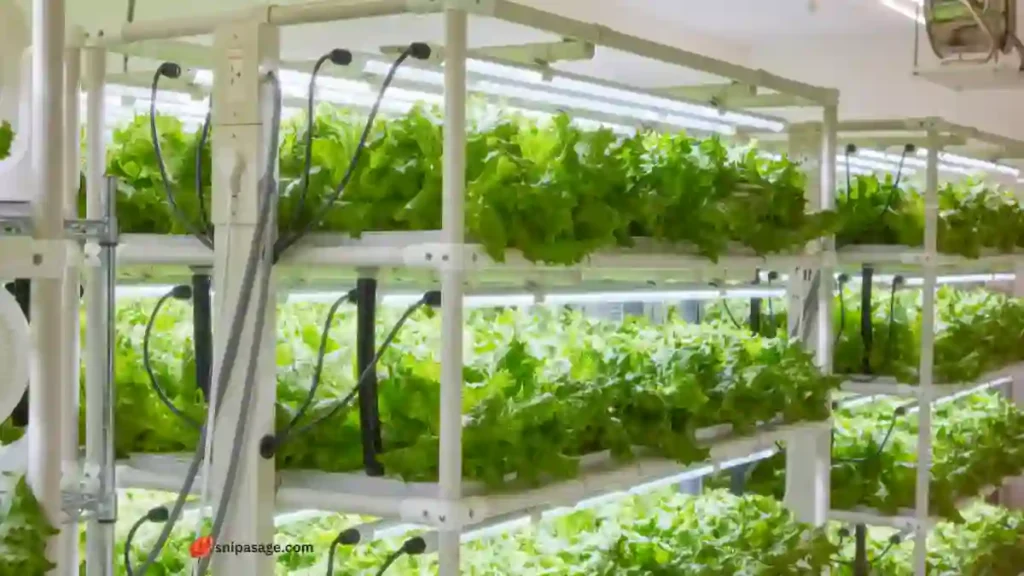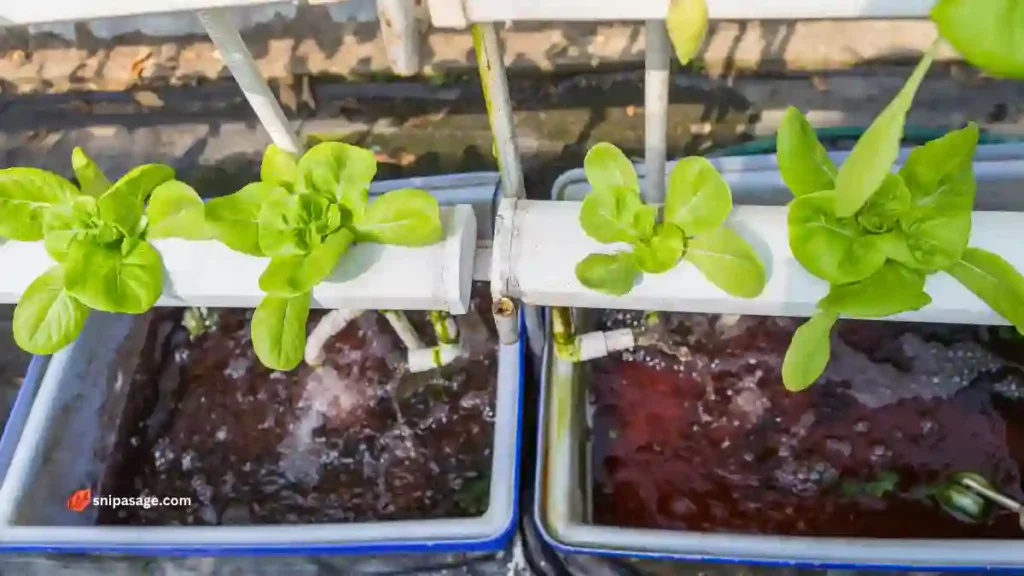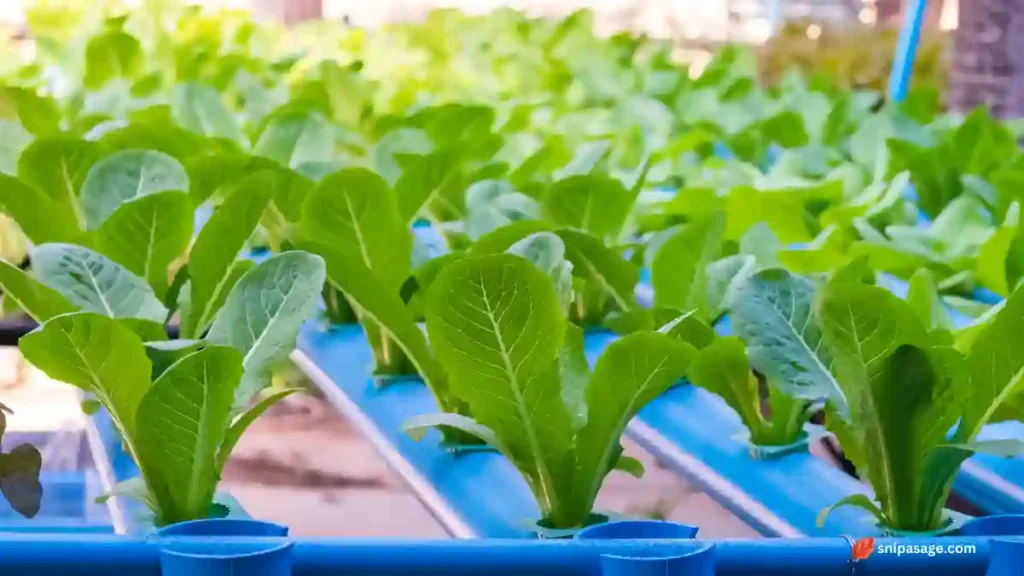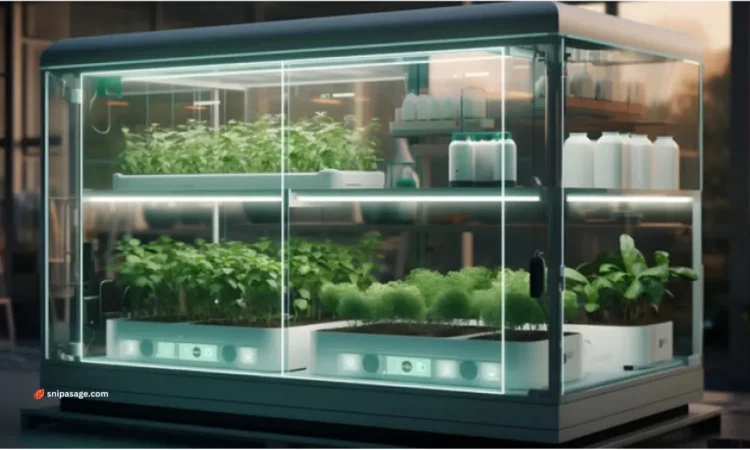Different types of hydroponic systems are available with variations in their appearance and size; some simple ones use gravity to feed plants, while others are big and automated, employing pumps and timers to automatically supply nutrients to plants.
The prices of these systems vary. Thus, those with small-scale gardens can choose cheaper hydroponics than those for large farms. Some also have amenities such as lights, fans, and temperature regulation, among others.
The Hydroponic Systems
Essentially a system of growing more crops for an overpopulated planet and growing plants with less land using nutrient solution instead of soil. For this reason, it is important to select the right hydroponic farming system because the main purpose of using this system is to provide enough solutions to the roots where plants get their food.
Even though they use 90% less water than soil-based farming, Hydroponic systems typically depend on water. The estimated market value of the hydroponic field today stands at around USD 5.06 billion by 2024. It is expected to reach approximately USD 7.36 billion by 2029. So you want to tell them why it has gained popularity day after day.
Different Types Of Hydroponic Systems:
Different types of hydroponic systems include ebb and flow, deep water culture, nutrient film technique (NFT), aeroponics, or wick systems, which have both positive sides as well as downsides depending on what your crop needs. Kratky method can also be used in small gardens. If you want to know more about these things, please read below.
1. Nutrient Film Technique (NFT) Hydroponic Systems

In the Nutrient Film Technique (NFT), a running stream of water flows through a channel having pumps installed within it. Roots of plants can dip into this type of system so as to receive nutrients. NFT is one specific type of hydroponics being widely practiced today everywhere. Reduced amount of water usage makes it a popular field technique.
| Advantages of NFT | Disadvantages of NFT |
| You don’t need a timer because the solution keeps flowing all the time. | The roots will be dehydrated if the water circulation system is stopped. |
| This system saves more water than others. The plant roots can go down and get nutrients. | For the new plants, the intense sunlight will be harmful. |
| You don’t have to use a system that recycles water for the next round of farming. | The highly-growing roots can block the channel. |
We have applied the system through this process:
Many farmers prefer using such kind of hydroponics for large scale cultivation. Then, the plant roots get nutrients through a tray or tube with a pump. These roots take air from the atmosphere around them and remain wet by hanging above water all the time. To ensure the air in both the water and tube, put air stones or capillary matting in the tank. Growing beets is best done using Nutrient Film Technique (NFT) hydroponic systems.
For Successful Implementation:
- you’ll need a tray for planting,
- a container with water and nutrients,
- and small pots with things like perlite, coconut, rock wool, etc.
- It’s good to use distilled water to get rid of anything harmful.
2. Deep Water Culture (DWC) Hydroponic Systems
Plants grow faster than in soil
Most farmers find the deep water culture (DWC) system simple to use. Another name for it is a floating garden or raft system. In this type of hydroponics, small containers are employed to hold nutrient-rich water while floating on top of a larger container that is full of more nutrient-dense solutions. The roots of these plants are exposed to the oxygen-rich nutrient solution in which they are immersed completely underwater. Still, you should always ensure that there’s enough air for their survival because this method relies entirely on oxygenated water.

Pros
| 1. DWC is not expensive to get and doesn’t need a lot of looking after. |
| 2. You just need basic air pumps for small fixes. |
| 3. It makes less mess, and you save more money. |
Cons
| 1. But it’s not good for big plants, |
| 2. and it’s hard to control the temperature. |
The suitable plants for DWC are growing leafy greens like-
- Head lettuce,
- Baby leaf greens,
- Large leaf greens,
- Herbs.
Maintenance tips
Here are some tips to keep your plants healthy:
- Good growth requires enough oxygen for plants. Have sufficient sunlight on your plantation. Ensure they have regular feedings.
- Prepare some water in case your garden becomes dry too quickly. Examine your plantation regularly for any signs of bugs or rather diseases affecting them. Regular trimming helps the plants grow well.
- Special pots retain moisture within the soil and keep it dampened. Keep giving your plants food after some time so as to make them grow better at the flowering stage and beyond. Watch out for over-watering signs!
- Use soil that can allow water to go through and is also good for your plants. Furthermore, the pots should have holes at the bottom to enable excess water to drain. Also, remember to place the pots where there is enough light and sufficient water.
- Give plants air to keep them healthy. Check them constantly for insects or diseases. If you notice anything wrong, fix it as soon as possible. Prune the plants regularly so that they grow well.
- Keep the plants hydrated with clean water. Keep on checking them if they are sick or have any bugs on them. Sometimes, you may need special items to prevent some diseases from spreading further.
3. Wick Hydroponic Systems

Wick Hydroponics is a way of growing plants that do not need soil. It uses a wicking system that moves nutrients and water from under the pot up into its roots; no soil is needed, meaning this technology comes in handy in cities where land may be scarce.
Advantages
| 1. Very user-friendly for beginners. |
| 2. Cheap and easy to set up. |
| 3. Use very little energy. |
| 4. Ideal for smaller plants, such as lettuce, herbs, etc. |
Disadvantages
| 1. The growing outputs are less than the other systems. |
| 2. Yield fruits could be better. |
Maintenance requirements
- Wick
- Monitoring
- Solutions
- Distilled water
- Reservoir
4. Ebb & Flow/Flood & Drain Hydroponic Systems
This technique is a type of hydroponic gardening that involves flooding and draining processes that mimic natural rainfall and evaporation patterns. It usually entails periods when the growing material gets soaked with nutrient-rich water before being drained off again into storage tanks during other periods. This ensures a regular supply of essential elements for proper growth while preventing excessive hydration problems.
Advantages
| 1. Very flexible in producing foods. |
| 2. Grow many different plants at once. |
| 3. Little fertilizer is required in this EBB method. |
Limitations
| 1. Higher startup cost compared to the other hydroponic methods. |
| 2. Require consistency monitoring. |
| 3. Oversaturate your plants. |
Plants can be grown in this method
- Strawberries.
- Tomatoes.
- Cucumbers.
- Peppers.
- Lettuce.
- Spinach.
- Radishes.
- Beans
The producer requires more expertise to run such a hydroponic system because it’s quite an expensive project compared to other methods.
5. Drip Hydroponic Systems
Drip hydroponics refers to feeding plants directly through their roots without using soil; it does not require soil, thus making it better because soil can limit both space and amount of watering; moreover, this way saves more moisture than when irrigation travels through several layers of earth before becoming available for absorption by roots.
Pros
| 1. It provides more control over nutrients and water supply. |
| 2. Investment is less than the other methods. |
| 3. There is less chance of the system failing. |
Cons
1. The water can not be adequately filtered. |
| 2. The initial cost may be high compared to the other systems. |
The crops have shown excellent performance in drip hydroponics
- Arugula
- Butterhead lettuce
- Collared greens
- Herbs
- Kale
- Mustard greens
- Microgreens
- Spinach
- Swiss chard
6. Aeroponics Hydroponic Systems
Aeroponics means growing plants in mist chambers without any soils involved in the growth process but only air; essentially, these plants do not hang down but are located inside containers filled with required elements. That makes it great because they receive enough amounts of oxygen, nutrients, and water.
| Benefits | Challenges |
| 1. Roots can dip into more oxygen than the other system. | 1. Costly than the other system in the beginning. |
| 2. Allow the plants to grow 3x faster than soil and other hydroponic systems. | 2. Before starting this, you have to gather strong knowledge and have to be more experienced. |
Both fruits and vegetables are suitable for aeroponics farming. In spite of the fact that they need more capital input initially, it increases ROI in the long run. Care and maintenance tips.
7. The Kratky Method of Hydroponics
Kratky method hydroponics is a way of growing plants without pumps or air stones; in this method, water along with nutrients is soaked into some special material such as perlite or rock wool. It allows gravity to supply air and nutrients to the plants.
The things are needed for:
- Pot, especially a mason jar, drills/cuts the cap of the pot.
- Nutrients solution.
- Some tap or distilled water.
Plants suitable for the Kratky method
- Basil
- Parsley
- Cilantro
- Rosemary
- Oregano
- Thyme
- Mint.
When using this method, always try to sustain a pH level somewhere between 5.5 and 6.5 because that is where optimum results can be achieved.
Choosing The Right Hydroponic System For You:
In these various hydroponic systems, your choice of growing system will depend on what kind of plants you desire. Therefore, if you want more crops, then go for a drip system or NFT system, but if you wish to go for an indoor garden, then wick hydroponics would be a better option. Hence, know the outcome that you want before starting with them. For example, among various hydroponic systems, one must read both the advantages as well as disadvantages of all these systems properly so that one might make the decision accordingly.
Future Trends In Hydroponics:
Hydroponics will be easier and better in the near future. It will become more automated, and we will be able to control things like temperature, light intensity, and nutrients more exactly. Additionally, hydroponics is going to be increasingly adopted in cities where there is limited space, as well as in growing plants in controlled environments.
Conclusion:
For higher yields of fruits and vegetables on a small piece of land, one should consider adopting hydroponic systems. There, you may choose indoor gardening or outdoor farming. In case you are unable to afford all these growing methods, you can always start with any of them depending on your budget. The six different types of hydroponic systems, inclusive of the Kratky system, are great for cultivation purposes. Otherwise, if you have queries about it, call us, but assure us that our customer care unit will do their best for you guys.

